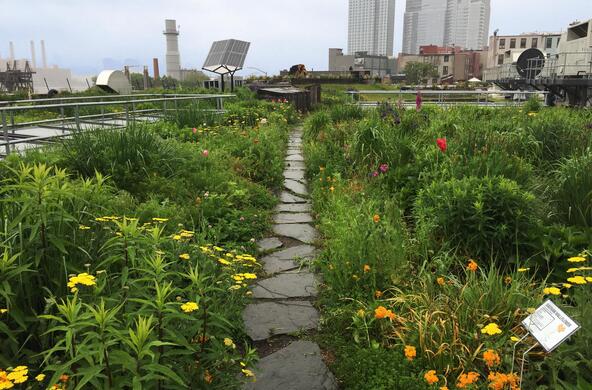Speaker: Dr. Amanda Phillips de Lucas, Postdoctoral Research Assistant, Cary Institute of Ecosystem Studies
Full title: Maintaining Green Infrastructure: Stewardship, Justice, and Environmental Development in Baltimore
Over the past decade, green infrastructure (GI) has emerged as a favored intervention within urban areas struggling to resolve issues related to stormwater, pollution, and degraded environmental quality. These installations include, but are not limited to, bioswales, pervious pavements, and green roofs. GI is often touted by planners and engineers as the carrier of multiple ecological, health, and social benefits. Thus, GI aims at transformative ends – a technological form that delivers social, ecological, and functional services.
Utilizing green infrastructure as a strategy for stormwater management marks a major change in who is involved in the construction, planning, and implementation of municipal infrastructure. As stormwater management facilities move out of pipes and into public spaces, a new cohort of professionals including landscape architects, community organizers, and environmental scientists are interested in implementing and contributing to the construction of the sustainable city.
Drawing from an analysis of interviews and archival research that Phillips de Lucas conducted in Baltimore between 2018-2020, this seminar will demonstrate how disciplinary silos have a material impact on the quality and maintenance of green infrastructure. Further, Phillips de Lucas will argue that many professionals are not trained to solve problems collaboratively or incorporate non-technical knowledge within planning and design. These conflicts hinder the ability of stakeholders to develop shared governance protocols, practices, and standards to achieve both localized and system-spanning effects.
Finally, Phillips de Lucas will discuss how mapping stakeholder networks offers one mechanism to understanding how institutional motivations and shared modes of problem definition are aligned amongst stakeholders. Drawing attention to these commonalities might offer one mechanism to improve the adoption and implementation of GI.






